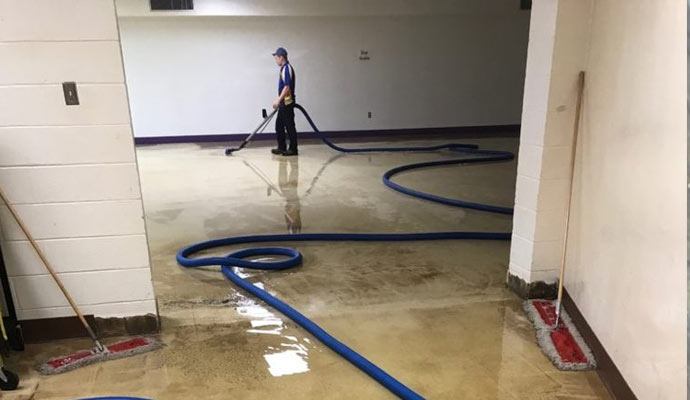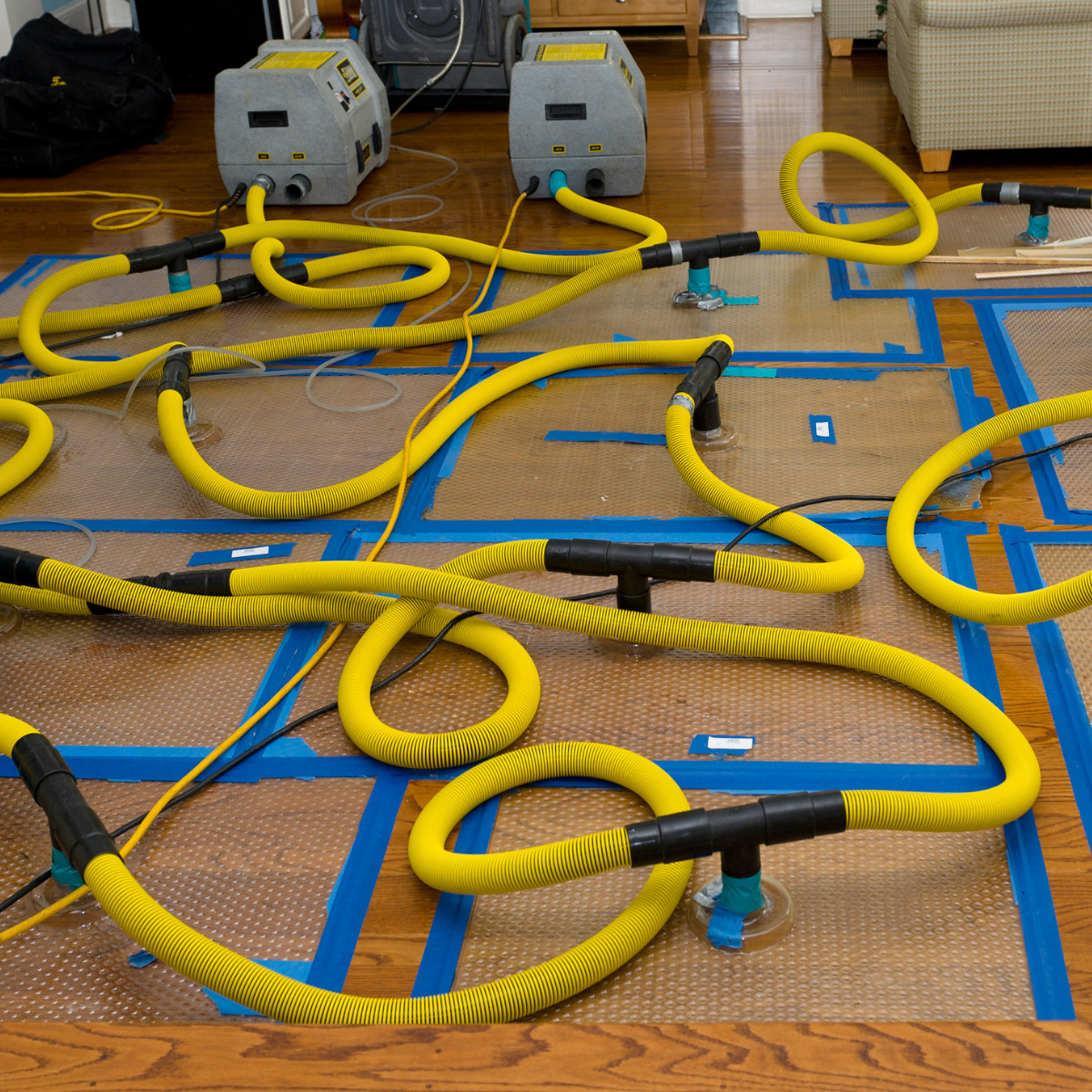Leading Tips for Effective Water Damage Restoration: Protect Your Home Today
Water damage can strike all of a sudden, creating significant disturbance and possible risks. Efficient restoration requires a methodical strategy to lessen further injury. From reviewing the damage to implementing safety nets, each action plays a vital duty in protecting property. Understanding these approaches can make all the distinction in the consequences of a water-related crisis. What essential activities should be prioritized to assure extensive defense?
Evaluate the Damage Immediately
When a water damage event happens, it is necessary to analyze the damage immediately to minimize additional problems. This first evaluation helps establish the degree of the damage and determines influenced locations. Water can leak right into wall surfaces, floors, and furnishings, causing mold development and structural instability if not attended to without delay. An extensive evaluation needs to consist of looking for discoloration, moisture, and musty odors, which suggest moisture visibility. It is also crucial to record the damage via photos and notes for insurance policy functions. Involving experts for a much more comprehensive assessment may be essential, particularly when managing considerable or concealed damage. Water Damage Restoration. Early acknowledgment and exact evaluation lay the structure for effective restoration and safeguard the residential property from additional difficulties
Turn off the Water Supply
Turning off the supply of water is a necessary action in preventing further damage throughout a water-related incident. When a leakage or flood occurs, immediate activity is vital to lessen the degree of the damage. Locating the major water shut-off valve must be a top priority. This shutoff is often located near the water meter or where the water line gets in the residential or commercial property. Once situated, transforming the valve clockwise will stop the circulation of water. In instances where the major valve is inaccessible, private shut-off valves for devices may additionally be used. Without delay turning off the water not just safeguards the home from additional harm yet also assists in the subsequent restoration process, ensuring that recuperation efforts can begin right away.
Get Rid Of Excess Water Promptly

Eliminating excess water quickly is crucial for lessening damage and preventing mold and mildew development in affected locations. The longer water stays in contact with materials such as wood, drywall, and insulation, the better the risk of structural damage and the development of mold. Water Damage Restoration. Homeowners must act promptly to examine the scenario and utilize ideal devices, such as wet vacuum cleaners or pumps, to remove standing water efficiently. If the quantity of water is significant, contacting specialist restoration services might be required, as they can supply specialized tools and competence. Additionally, eliminating furniture and belongings from the afflicted area can assist to lower damage and facilitate the overall restoration process. Prompt action not just safeguards residential property yet likewise aids in a smoother healing trip
Dry Out the Affected Area
After removing excess water, it is crucial to dry the damaged location thoroughly. This involves getting rid of any kind of standing water and boosting air circulation to promote dissipation. Reliable drying out will certainly help avoid mold development and more damage.

Remove Standing Water
Swiftly dealing with standing water is critical for effective water damage restoration. The presence of stationary water can cause additional residential or commercial property damage and create an environment conducive to mold and mildew development. To mitigate these dangers, it is necessary to eliminate standing water as quickly as possible. This procedure commonly involves utilizing submersible pumps, wet vacuums, or specialized removal tools. Experts suggest reviewing the deepness and level of the water prior to picking the suitable technique for removal. Safety and security safety measures should additionally be taken, including wearing protective equipment and making certain power is transformed off in impacted locations. Once the standing water is effectively eliminated, the drying out process can begin, even more securing the home from recurring damage.
Increase Air Blood Circulation
Increasing air circulation is crucial for efficiently drying areas influenced by water damage. This process assists to accelerate dissipation, reducing the danger of mold and mildew and mildew development. Professionals usually suggest making use of fans to produce a steady airflow throughout the space. Positioning box followers in see this here windows can reel in fresh air, while high-velocity fans can route air movement towards damp surface areas. Water Damage Restoration. In addition, opening windows and doors enables cross-ventilation, improving the drying procedure. Dehumidifiers can also be utilized to eliminate excess wetness from the air, more helping in drying. By making certain that air distributes easily, residential property proprietors can greatly lessen the long-term impacts of water damage and shield the honesty of their structure
Examine for Mold Development
Mold and mildew growth is a serious concern complying with water damage, as it can lead to health and wellness concerns and architectural wear and tear. After any flooding or leaks, it is crucial to carry out a detailed examination of the impacted areas. This includes monitoring concealed rooms such as behind wall surfaces, under rugs, and in cellars or attic rooms where dampness may stick around. Signs of mold include a stuffy smell, staining on surface areas, or visible development. Homeowner should use safety equipment when examining, as mold spores can present health and wellness dangers. If mold is discovered, it is essential to address it promptly, as postponing remediation can exacerbate the issue and enhance the threat of major health issues for passengers. Early intervention is crucial to effective mold management.

Fixing and Recover Damaged Frameworks
When attending to water damage, it is crucial to first evaluate the structural honesty of the influenced locations. This assessment helps recognize possible threats and notifies the needed repair strategies. Involving professional restoration services ensures that the restoration process is performed securely and effectively.
Evaluate Structural Honesty First
Prior to initiating any type of water damage restoration, it is crucial to assess the architectural integrity of the afflicted area. This examination helps recognize any jeopardized components, such as wall surfaces, structures, or light beams, which might posture safety dangers - Water Damage Restoration. Checking for indicators of warping, splitting, or mold and mildew development is important, as these indications can disclose underlying damage that requires instant focus. Additionally, understanding the degree of the damage can direct restoration efforts and figure out whether fixings are viable or if replacement is needed. It is very important to document searchings for thoroughly, as this information can be important for insurance coverage cases or future referral. Prioritizing architectural assessment warranties that restoration initiatives continue securely and efficiently, eventually shielding the home and its owners
Usage Expert Restoration Services
Utilizing professional restoration solutions is essential for effectively fixing and restoring broken frameworks after water occurrences. These specialists have the essential training, tools, and experience to examine and reduce water damage extensively. They can recognize concealed issues, such as mold and mildew growth and architectural weak points, that might not be immediately apparent. Expert services likewise employ sophisticated drying methods and equipment, making sure that all moisture is gotten rid of to protect against more damage. Furthermore, they stick to market requirements and laws, making certain that the restoration procedure is secure and reliable. By engaging restoration experts, homeowner can speed up recuperation, reduce lasting damage, and ultimately safeguard their financial investment. This proactive method is essential in maintaining the stability and safety and security of affected frameworks.
Prevent Future Water Damage
To successfully protect against future water damage, homeowners must take on a proactive technique to maintenance and repair work. Normal assessment of seamless gutters, roofings, and downspouts is essential; stopped up seamless gutters can lead to water overflow and roofing leaks. Additionally, looking for leakages in plumbing components and devices can combat potential damage. Home owners should likewise think about installing sump pumps in cellars or low-lying locations to handle water accumulation. Sealing fractures in structures and guaranteeing proper drainage around the building are essential actions in protecting against water intrusion. Additionally, maintaining humidity degrees with dehumidifiers can protect against mold and mildew development. By carrying out these preventative steps, property owners can greatly lower the danger of water damage and secure their building for the long-term.
When a water damage event occurs, it is necessary to examine the damage right away to reduce additional concerns (Water Damage Restoration). Getting rid of excess water without delay is important for minimizing damage and preventing mold and mildew growth in affected areas. Promptly attending to standing water is vital for reliable water damage restoration. The visibility of stationary water can lead to more residential or commercial property damage and develop an atmosphere favorable to mold and mildew development. Before starting any type of water damage restoration, it is necessary to assess the architectural stability of the afflicted area